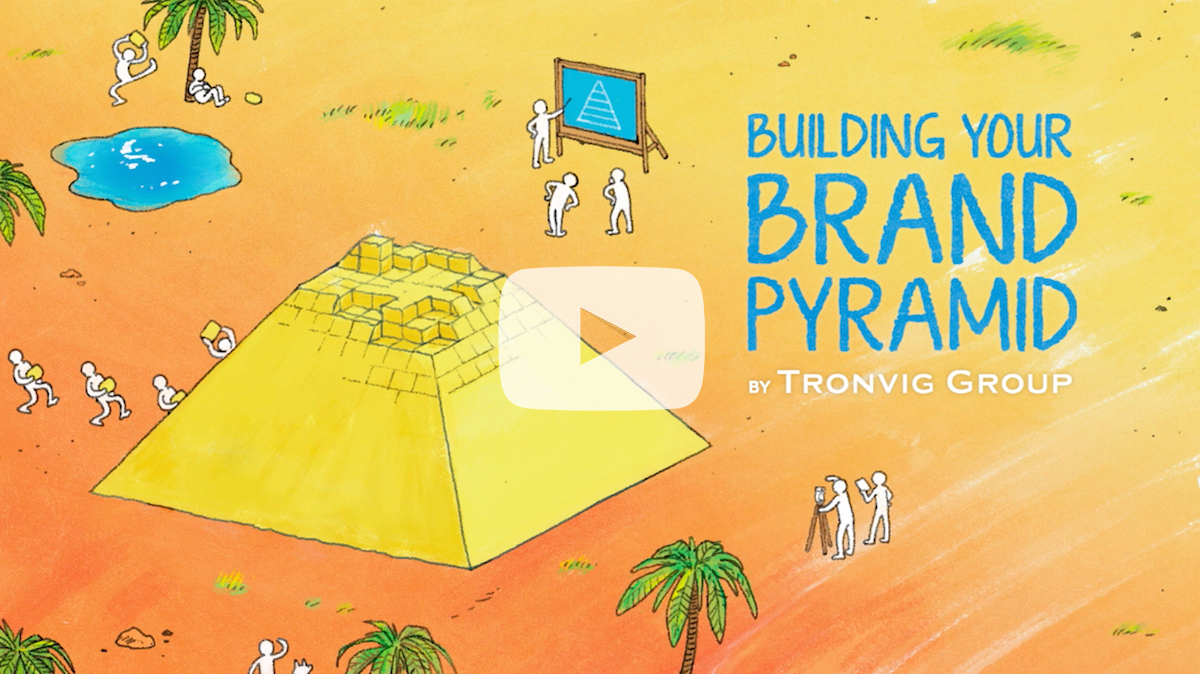Originally published nearly 10 years ago, I have updated the this article to account for business reality in 2025. The core ideas remain as relevant than ever.
“Actually ‘what is our business’ is almost always a difficult question which can be answered only after hard thinking and studying. And the right answer is usually anything but obvious.” —Peter F. Drucker
What business are you in?
This seems like a stupid question. I assure you that it is not.
In every Brand Pyramid workshop I ask this seemingly innocuous question: What is x (insert name of your organization)? Rarely are the initial answers easy, clear, consistent or useful.

Underneath this question is the need to have answered the question of what business you are in. Just thinking over the past ten year
s of workshops, this seemingly simple question is almost always hotly debated by people who came into the session thinking they knew the answer. In some cases the discussion leads to a strong and assertive answer that is clear and deeply satisfying to the group. In other cases there is no resolution. Instead the participants realize that the question is very real, very difficult and very relevant to their brand and the future path of the business or organization.
If we cannot agree on who we are or what business we are in, how is anyone on the outside going to understand or guess right?
I have found this question poses a challenge in almost every engagement, and this often surprises the participants. It wakes people up as they realize that they cannot answer or cannot agree on the answer. The perceptive in the group also see in this demonstration that this directly connects to the brand problem they may have brought us in to solve. “If we cannot agree on who we are or what business we are in, how is anyone on the outside going to understand or guess right?” With rare exceptions it proves to be one of the hardest questions to meaningfully resolve.
Why is this question important?
The classic example of why What business are we in? is important is the railroad industry. What happened to the power and reach of these industrial and economic giants of the 19th and early 20th century? Why did they lose out to other businesses that had far less money and resources? The simple explanation is that they got the answer to this question wrong. Or rather, they did not seriously ask the question at all. They just assumed that they knew the answer.
To the railroad titans at the height of their wealth and power, they saw nothing but more money in their future. Why would they question the very nature of their business? I can almost hear them scoff at the question. “We are in the business of railroads! We invest in expanding and improving rail lines. We make better, faster and more efficient locomotives. We compete with other railroad companies and capture market share. We know what business we are in and it’s a damn good business!” Until it wasn’t.
And then it was too late.
They saw only what they were selling, not what their customers were buying.
This lack of introspection, this poor answer to the “dumb” question, translated for them into a failure to see that they were in fact not in the railroad business but in the transportation business. They saw only what they were selling, not what their customers were buying. They were selling railroad services, but their customers were buying a convenient means to get themselves or their goods from one place to another. So when other sometimes better modes of transportation arose in the early and mid 20th century, they did not see these new technologies as opportunities to more deeply satisfy their customers in solving the problem of transporting people or goods. They saw instead only competitors to the railroad business, their business. They therefore hunkered down and … they lost. Had they answered the question differently, had they understood that they were in the business of better serving their millions of customer’s transportation needs and not just their railroad needs, the story might have been very different.
Change is inevitable
Markets change, people’s needs change. Wars and recessions happen. Innovations disrupt industries. Climate shifts. AI rewrites business models. Your customer’s needs change. How you innovate in response to these changes determines your fate as a business.
The railroads stuck with the scale they had mastered and thus failed to prosper in a changed environment.
The answer to the question What business are we in? also has a scale and a focus. The size of the scale is not set but must be discovered. The focus is not predetermined and must also be discovered. The railroads needed to scale up and think transportation and not just railroads. In another circumstance they may have needed to scale down and focus, or change their focus entirely (See the evolution of 3M from a corundum mine or Kimberly-Clark from a paper mill). The railroads stuck with the scale they had mastered and thus failed to prosper in a changed environment.
“The best way to predict your future is to create it.” —Peter F. Drucker
Other essential questions
Getting this right requires more than just the answer to the question What business are we in? It also requires that you have an understanding of a collection of closely related questions (the first two you will recognize as #2 and #3 of the Five Most Important Questions):
- Who is our customer?
- What does our customer value? Here, you see, the railroads had an inflated notion of the importance of their particular mode of travel/transport. Against the automobile, for example, they underrated the customer’s desire for freedom. Against the airplane, in another later example, they underestimated the value that would be placed on speed even at the expense of cost and comfort.
- What customer needs in this market are not currently being adequately met? This cannot be surmised. It is important to go out and ask or go out and observe.
- What is the potential of this market? Here and in all subsequent questions we must do our best to think toward the future, no easy task.
- How is this market changing? Markets are inevitably always changing. How are we innovating to respond to that change?
- Who is our competition? This may not be obvious because the question is best assessed from the vantage point of the customer. What matters is who you are competing with in your customer’s mind, not who you think your competition is. (See Competitive Advantage Diagrams.)
- What technologies are emerging that will impact this market? We all know this question, but how are we actually thinking through its implications for own behavior (operational practice) and strategic choices?
In 2025, these last two questions loom especially large. Artificial intelligence, climate tech, and platform ecosystems are reshaping industries across the board. Who is your competition when AI-powered platforms now serve customer needs you didn’t realize were at risk? What “invisible” players are siphoning attention, capital, or market relevance? This is not theoretical—it’s your blind spot if you’re not asking.
All of this from one stupid question. Yes, and this is not really an exhaustive list.
So I ask again, What business are you in? The success of your strategy depends on a good answer. A good answer depends on your willingness to seriously ask the question and your willingness to fight about the right answer so that you can find a really good one. Don’t be the railroads of your business category.
Good luck.
If you want outside help making sure the conversation around this question (and the others) is robust enough, you can ask us to facilitate. That’s what our strategy workshops are designed for.
And if you want to improve your brand but can’t afford strategy workshops?
Because we know that not everyone needs or can afford our full process, we created a guided tutorial package for our foundational brand strategy tool: the Brand Pyramid. Watch the video for a preview.
For more information on the brand strategy tutorial, visit here where you will find a fuller explanation and link to a free download of the first video.



Ask for help.
We are kind, thorough and ready when you are. You just need to ask.